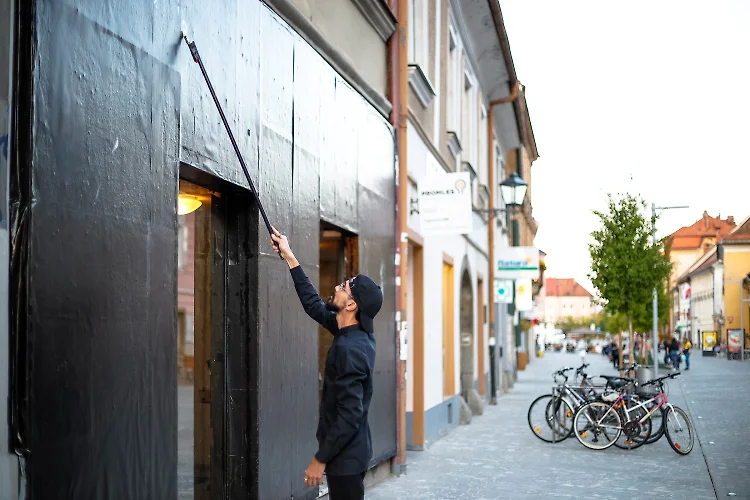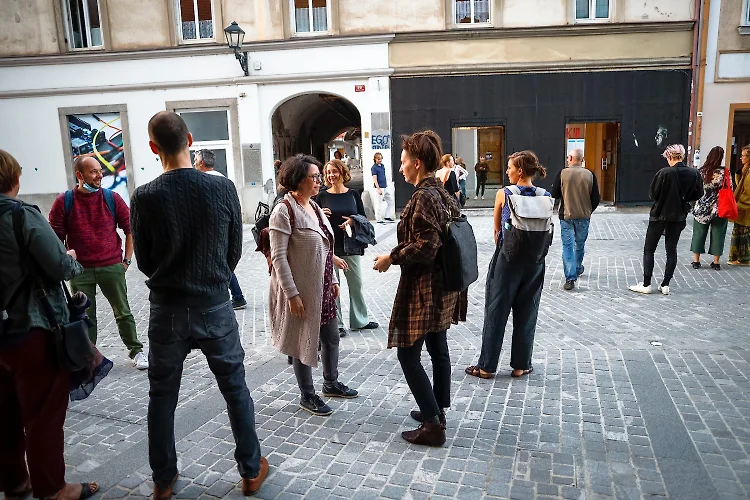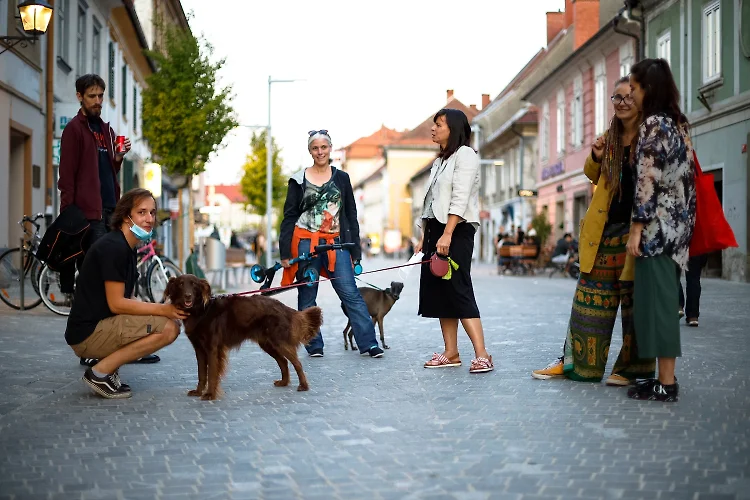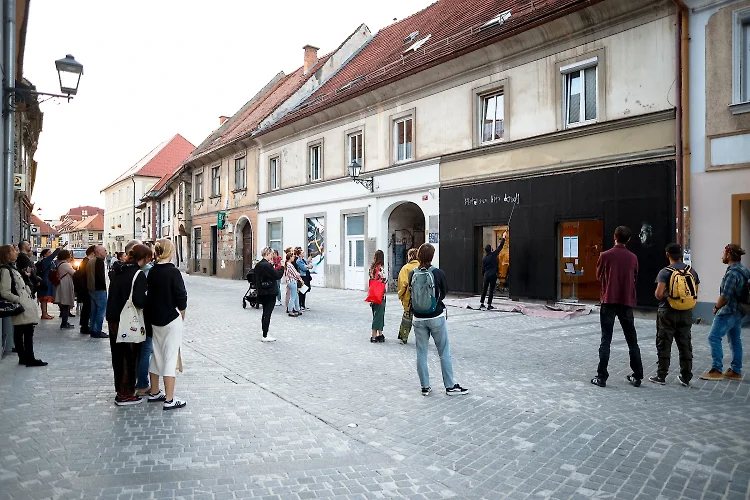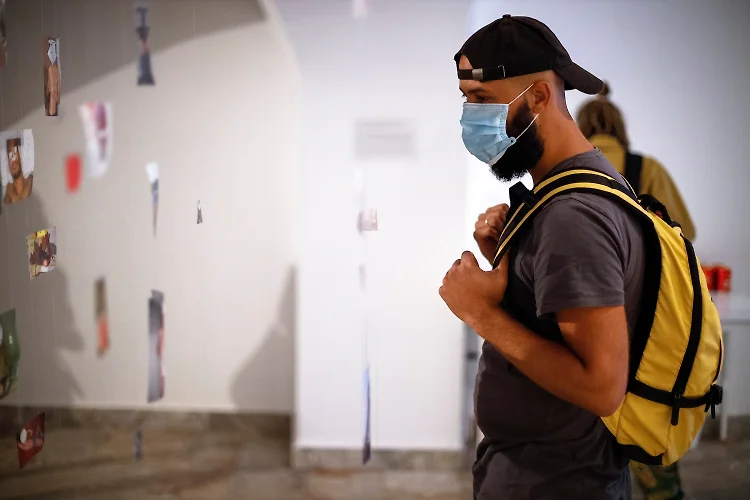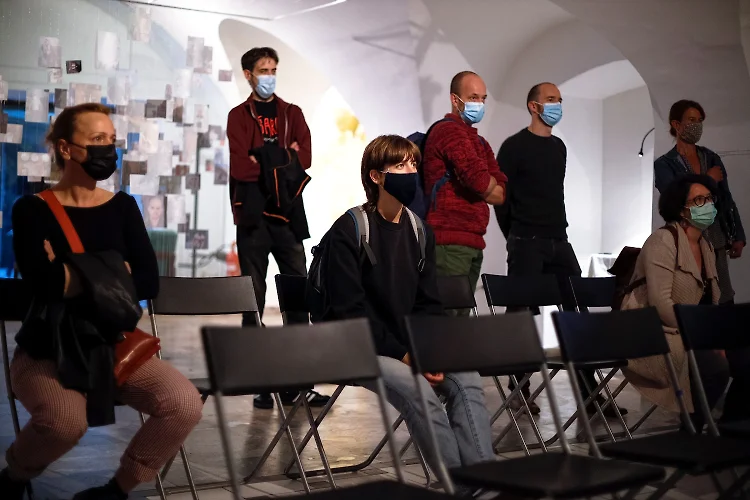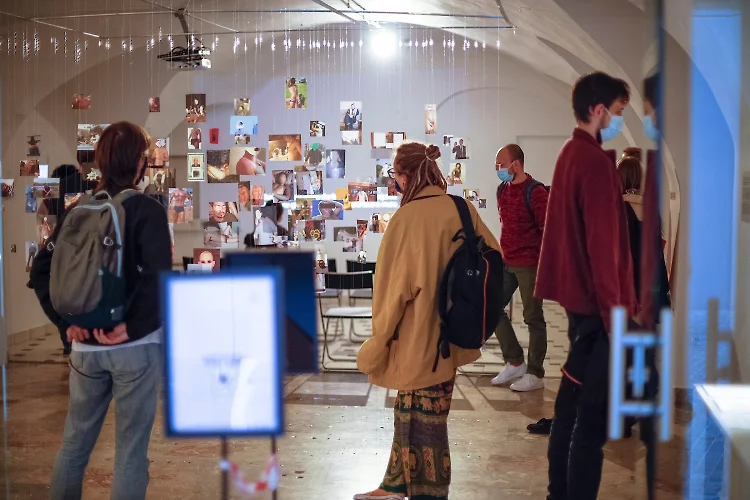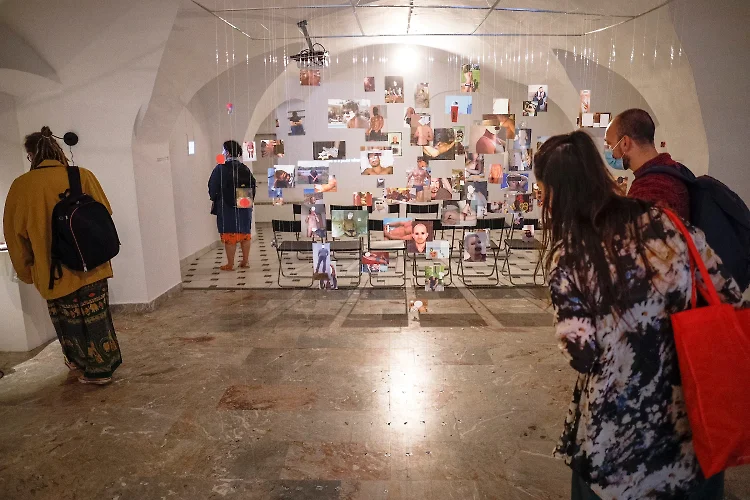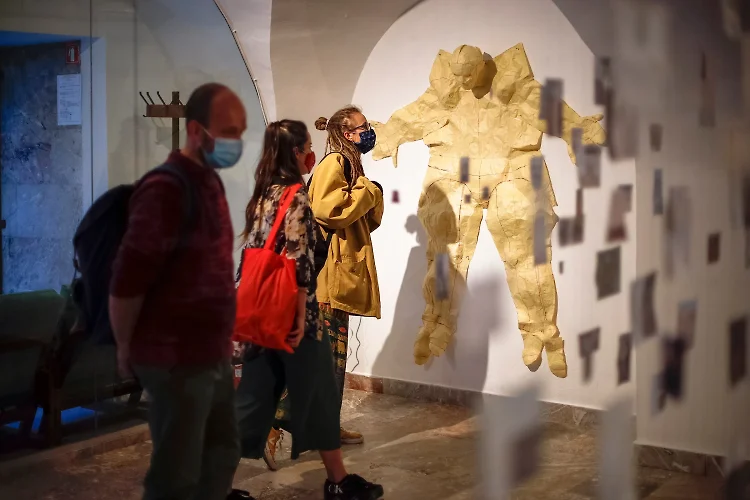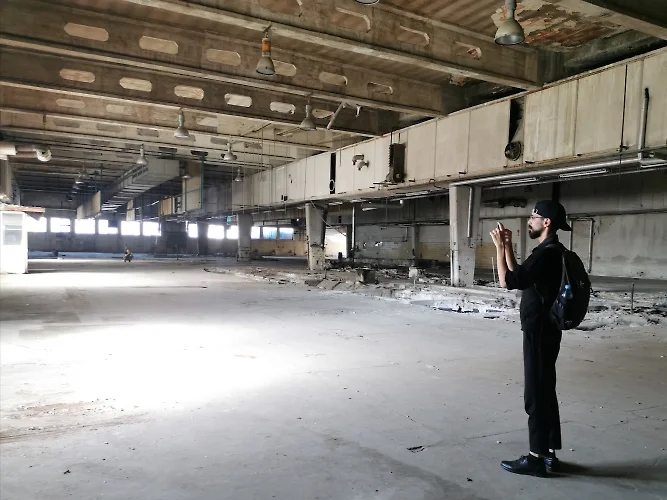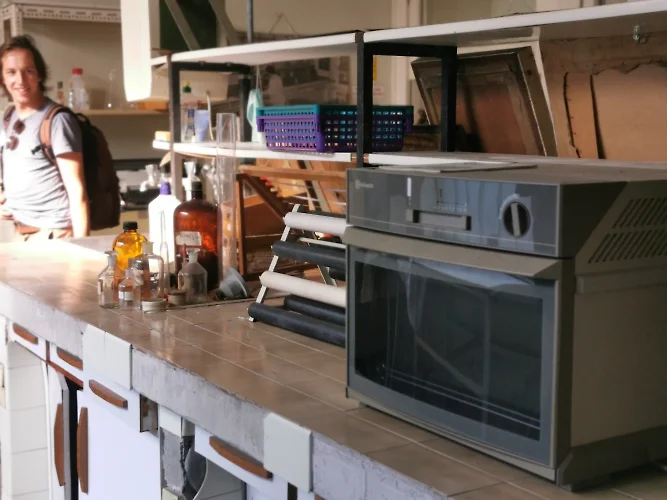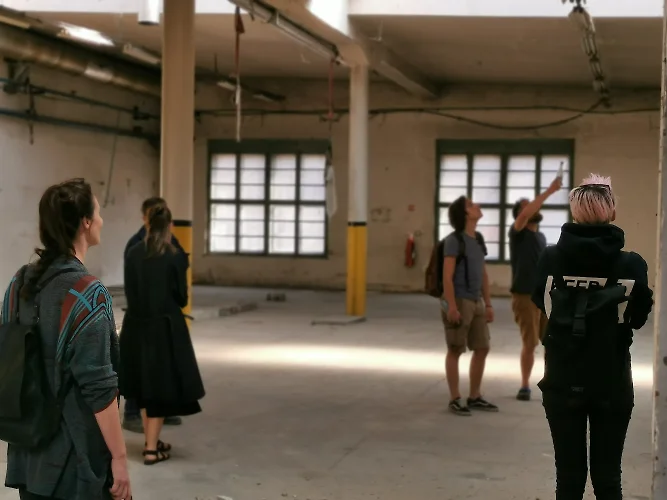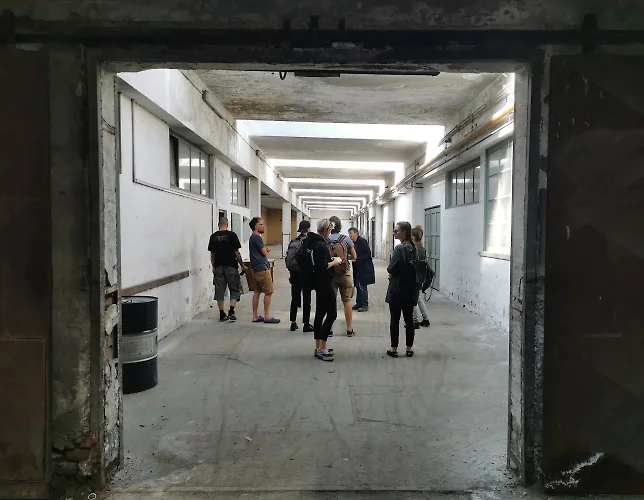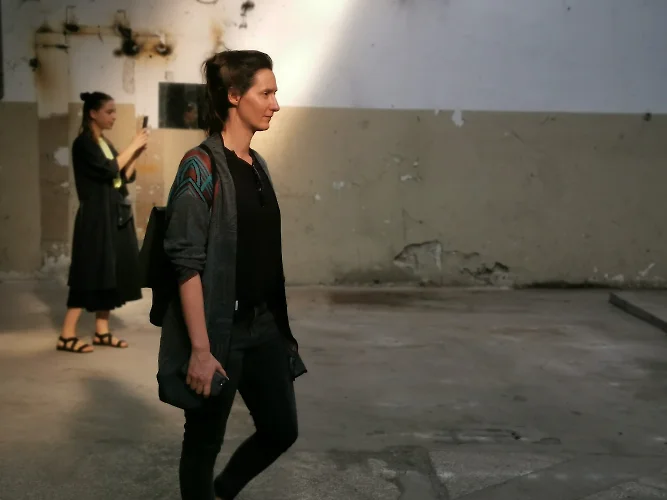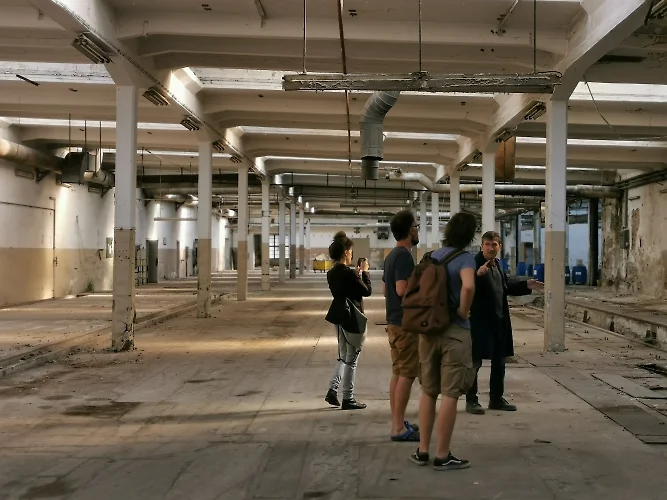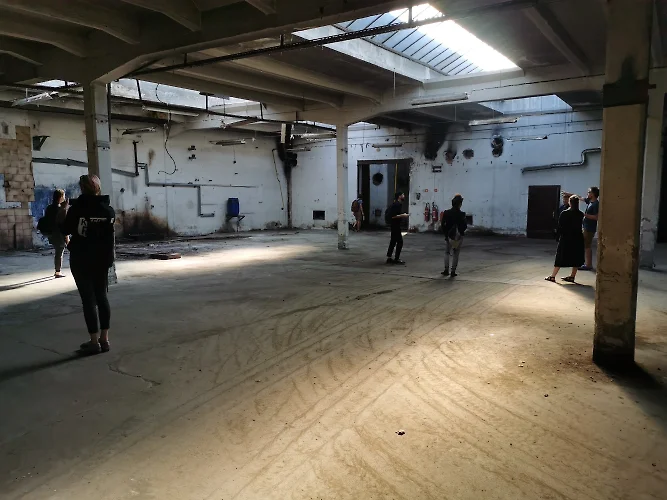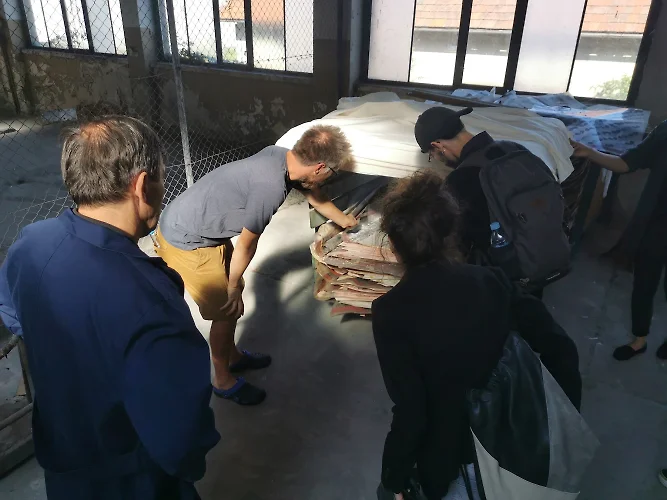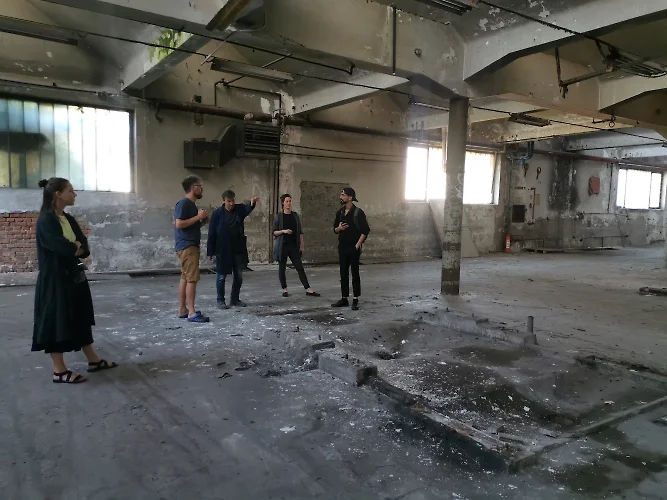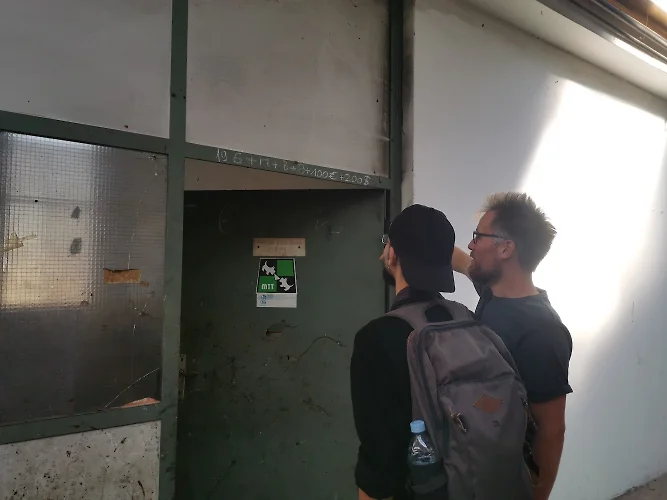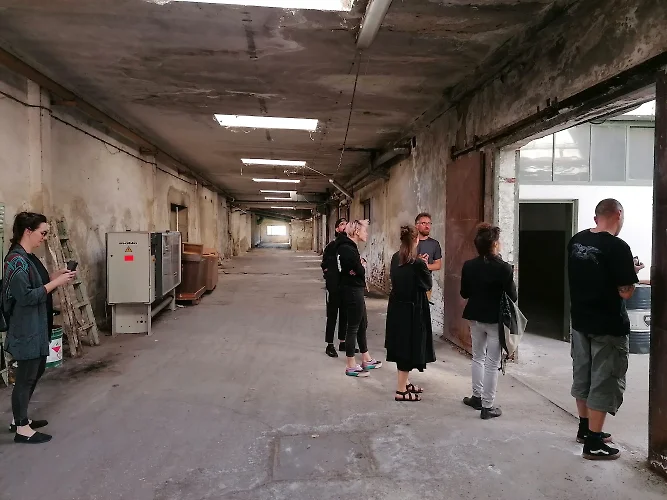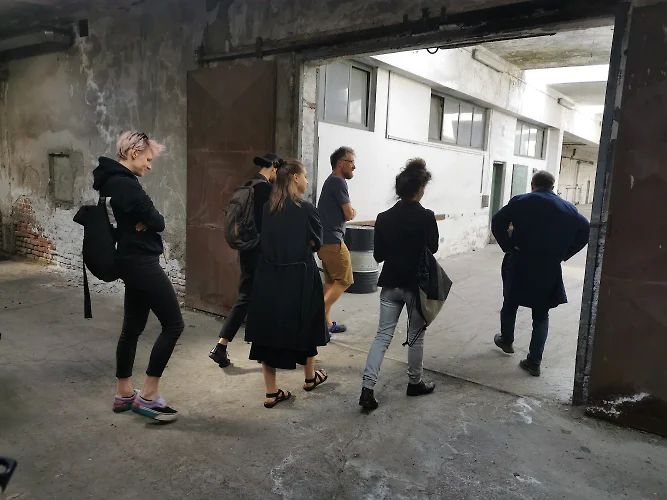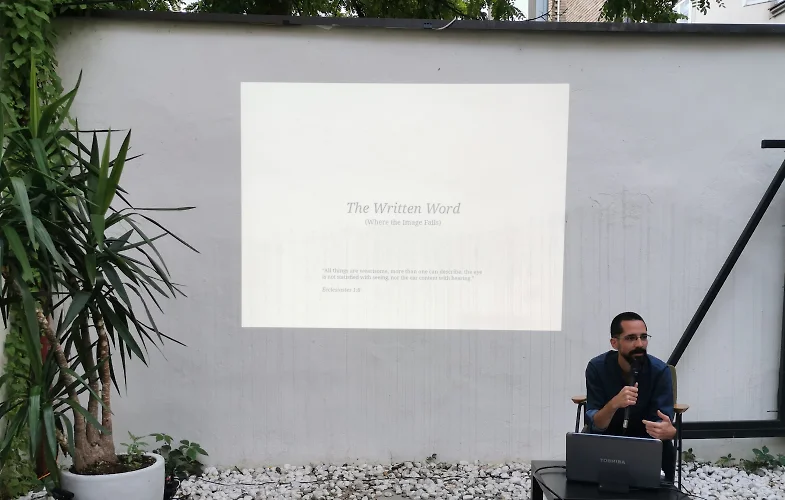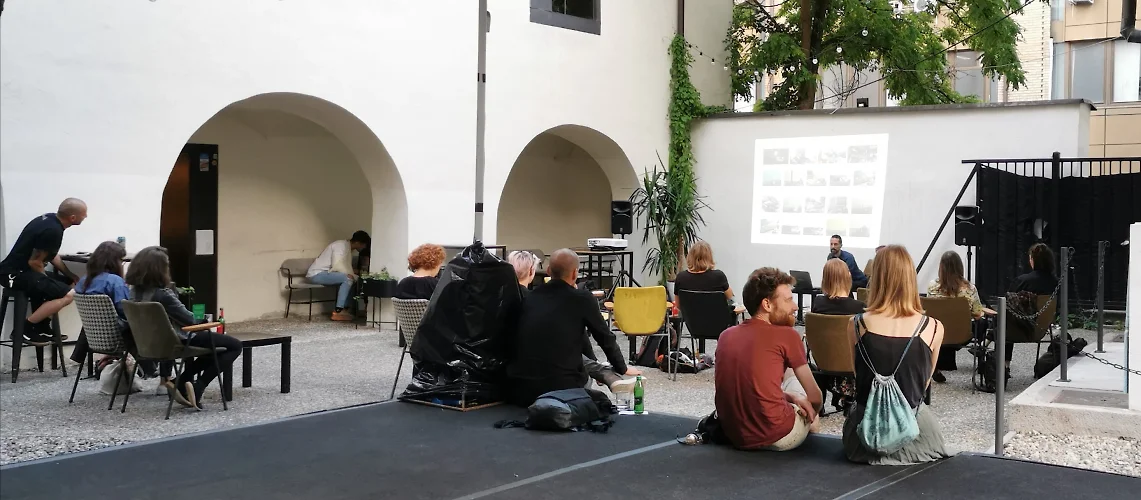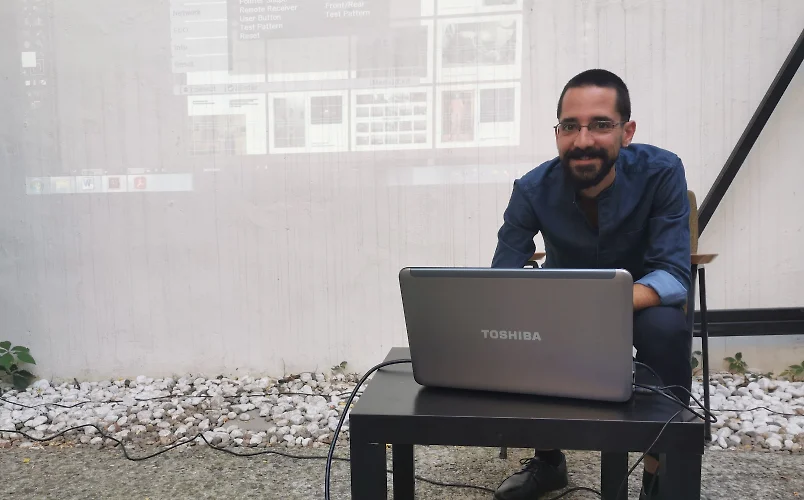Elie Mouhanna (ENG)
GuestRoomMaribor I 3.9.2021
In the framework of psychology, the skin is often defined as a membrane or border that enables the formation and perception of the difference between the inside (for instance the milieu of the biological body) and the outside (for instance the outside world, the nature, or the other body), and this difference enables the perception of the bodily whole as a condition of the individuality formation and apperception. Unlike that, anthropological inquiries of technology attribute this very function to technology understood as the human means of externalizing memory (for example, writing and other forms of data processing and storage) and liberation of the organs (for example, tools) as well as the starting point for differentiation between the figure and the background as the basis for human (visual) perception. What is then a dress in relation to the skin—some additional layer of the skin or a means of insulating the body that at the same time covers and potentially further emphasizes individuality?
In his works, Elie Mouhanna places himself on a broad field of the religion of technology which not only concerns the long history of cultivating nature—including the natural in man—but the theme of transforming or, better, expanding human capabilities by overcoming his naturally or culturally given capacities. In this case, technology is not only a mean of creating culture. Namely; technical prosthesis also has a reciprocal effect on the original human nature and culture. While media technologies undoubtedly grow out of culture, they act as autonomous entities that transcend this very same culture. It is no coincidence that since the Middle Ages onwards technological and scientific developments have often been driven by the tendency to bring humans closer to God-like omnipresence and immortality. On this basis, shifts in history can be linked to the change media technologies enforced into the organization of the social, as claims one of the important theoretical references of Mouhanna, Paul Virilio, who perceives cultural changes on the background of speed acceleration due to technological innovation and its consequential conflicts with the logic of biological rhythms and seasonal patterns of the human.
In the exhibition, Mouhanna replays three key themes framed by the religion of technology. First, the influence of media technologies on interpersonal communication, identity, and intimacy, as—among others—indicated by the placement of the father figure (a portrait of the artist’s father) illuminated by a telephone screen on the façade of Gallery K18. Second, the proximity of technology and the status of the skin as a membrane separating the milieu of the biological body and the exterior, as well as the placement of dressing practices in that very relation. Third, the relationship and difference between the digital and the material. The father figure in combination with the title of the exhibition »I wanted to be good enough for you.« at first glance pushes the listed themes in a distinctly personal direction. However, if perceived in a broader sense, it could either indicate the figure of God we try to imitate through technological development—in psychoanalytic optics, a figure that structures our personal relationships—or a state or political elites that pushes exhibited into the framework of recent Middle Eastern political history and the current Lebanese political and economic crisis.
Most of the gallery space is occupied by the work titled »Body_reImage: A Techno-Archeology of Intimacy and Digital Transcendence« consisting of archival images collected between 2012 and 2014 from a gay dating website that used to be the most used in the Middle Eastern region before the proliferation of smartphone apps. During the period digital images were collected, people had to conceal their true identities to avoid social discrimination and persecution, and this very circumstance of performed self-censorship, as Mouhanna explains, created an interesting situation of double-faced self-effacement or re-creation in cyberspace. The exhibited work, therefore, represents a transformation of Mouhanna’s personal digital archive into a physical version, however, the relation between the digital and physical is most explicitly addressed in the (originally digital) drawing series »Testimony of Shame«. The exhibition thus juxtaposes digital drawings from the series which in a sense lack physical materiality and the »translation« of one of them into a material form. The long-lasting activity of transmitting pixel by pixel into stitches on the woven surface of the old textiles in the first phase exposes a certain resistance of physical material: both the interface of the screen on which the digital drawing is projected and the textiles have a network structure, however, the threads of the textile are organically uneven which produces a difference that manifests itself in the material drawing. Besides the possibility of becoming aware of the resistance and specifics of physical material, the long process of transferring digital drawing into material form can also be interpreted from the point of view of the cognition process—mainly because Mouhanna tries to address universal themes that have marked humans for centuries. The framework of cognition thus opens a wider field of the function of externalization of intangible data, where a parallel between digital data and internalized thought or a feeling is indicated. As the Hegelian and Marxist philosophical traditions have pointed out, humans’ externalization of thoughts and feelings undoubtedly leads to their self-alienation. However, it also presents a precondition of (self)consciousness and communication, and therefore also intersubjective exchanges. Translating digital drawings into a material form is at the same time a gesture of their auratization—inscription into a concrete space and time, a kind of granting of uniqueness or in a sense bodily presence, and consequently also the gesture that eliminates (potentially) technologically supported immortality of digital objects.
Despite Mouhanna’s analytical approach to the relation between technology and the transcendental, the exhibition radiates highly personal themes, such as frustration over the inability to communicate and form intimacy (»This is a place where one waits.«), and above all how this frustration is internalized and transformed into violence against oneself. The latter, for example, is more directly represented in the installation »mybodywasyours_copy(1)«, where the artist—while referring to St. Bartholomew—transforms his skin into a surface, a mixture of clothing and a map, and even more obviously in the brutal scenes of mutilated bodies from the series »I wanted to be good enough for you.«
Kaja Kraner
Elie Mouhanna: I wanted to be good enough for you.
Curated by: Kaja Kraner, Lucija Smodiš and Miha VipotnikIn the framework of psychology, the skin is often defined as a membrane or border that enables the formation and perception of the difference between the inside (for instance the milieu of the biological body) and the outside (for instance the outside world, the nature, or the other body), and this difference enables the perception of the bodily whole as a condition of the individuality formation and apperception. Unlike that, anthropological inquiries of technology attribute this very function to technology understood as the human means of externalizing memory (for example, writing and other forms of data processing and storage) and liberation of the organs (for example, tools) as well as the starting point for differentiation between the figure and the background as the basis for human (visual) perception. What is then a dress in relation to the skin—some additional layer of the skin or a means of insulating the body that at the same time covers and potentially further emphasizes individuality?
In his works, Elie Mouhanna places himself on a broad field of the religion of technology which not only concerns the long history of cultivating nature—including the natural in man—but the theme of transforming or, better, expanding human capabilities by overcoming his naturally or culturally given capacities. In this case, technology is not only a mean of creating culture. Namely; technical prosthesis also has a reciprocal effect on the original human nature and culture. While media technologies undoubtedly grow out of culture, they act as autonomous entities that transcend this very same culture. It is no coincidence that since the Middle Ages onwards technological and scientific developments have often been driven by the tendency to bring humans closer to God-like omnipresence and immortality. On this basis, shifts in history can be linked to the change media technologies enforced into the organization of the social, as claims one of the important theoretical references of Mouhanna, Paul Virilio, who perceives cultural changes on the background of speed acceleration due to technological innovation and its consequential conflicts with the logic of biological rhythms and seasonal patterns of the human.
In the exhibition, Mouhanna replays three key themes framed by the religion of technology. First, the influence of media technologies on interpersonal communication, identity, and intimacy, as—among others—indicated by the placement of the father figure (a portrait of the artist’s father) illuminated by a telephone screen on the façade of Gallery K18. Second, the proximity of technology and the status of the skin as a membrane separating the milieu of the biological body and the exterior, as well as the placement of dressing practices in that very relation. Third, the relationship and difference between the digital and the material. The father figure in combination with the title of the exhibition »I wanted to be good enough for you.« at first glance pushes the listed themes in a distinctly personal direction. However, if perceived in a broader sense, it could either indicate the figure of God we try to imitate through technological development—in psychoanalytic optics, a figure that structures our personal relationships—or a state or political elites that pushes exhibited into the framework of recent Middle Eastern political history and the current Lebanese political and economic crisis.
Most of the gallery space is occupied by the work titled »Body_reImage: A Techno-Archeology of Intimacy and Digital Transcendence« consisting of archival images collected between 2012 and 2014 from a gay dating website that used to be the most used in the Middle Eastern region before the proliferation of smartphone apps. During the period digital images were collected, people had to conceal their true identities to avoid social discrimination and persecution, and this very circumstance of performed self-censorship, as Mouhanna explains, created an interesting situation of double-faced self-effacement or re-creation in cyberspace. The exhibited work, therefore, represents a transformation of Mouhanna’s personal digital archive into a physical version, however, the relation between the digital and physical is most explicitly addressed in the (originally digital) drawing series »Testimony of Shame«. The exhibition thus juxtaposes digital drawings from the series which in a sense lack physical materiality and the »translation« of one of them into a material form. The long-lasting activity of transmitting pixel by pixel into stitches on the woven surface of the old textiles in the first phase exposes a certain resistance of physical material: both the interface of the screen on which the digital drawing is projected and the textiles have a network structure, however, the threads of the textile are organically uneven which produces a difference that manifests itself in the material drawing. Besides the possibility of becoming aware of the resistance and specifics of physical material, the long process of transferring digital drawing into material form can also be interpreted from the point of view of the cognition process—mainly because Mouhanna tries to address universal themes that have marked humans for centuries. The framework of cognition thus opens a wider field of the function of externalization of intangible data, where a parallel between digital data and internalized thought or a feeling is indicated. As the Hegelian and Marxist philosophical traditions have pointed out, humans’ externalization of thoughts and feelings undoubtedly leads to their self-alienation. However, it also presents a precondition of (self)consciousness and communication, and therefore also intersubjective exchanges. Translating digital drawings into a material form is at the same time a gesture of their auratization—inscription into a concrete space and time, a kind of granting of uniqueness or in a sense bodily presence, and consequently also the gesture that eliminates (potentially) technologically supported immortality of digital objects.
Despite Mouhanna’s analytical approach to the relation between technology and the transcendental, the exhibition radiates highly personal themes, such as frustration over the inability to communicate and form intimacy (»This is a place where one waits.«), and above all how this frustration is internalized and transformed into violence against oneself. The latter, for example, is more directly represented in the installation »mybodywasyours_copy(1)«, where the artist—while referring to St. Bartholomew—transforms his skin into a surface, a mixture of clothing and a map, and even more obviously in the brutal scenes of mutilated bodies from the series »I wanted to be good enough for you.«
Kaja Kraner
GuestRoomMaribor I 25.8.2021
Interest Safari is a search for the intersection between the research subject of the residential artist and the local environment. The current guest of the GuestRoom Maribor residency program Elie Mouhanna is interested in fabrics and related social history. Maribor, once known as the Yugoslav Manchester, was also shaped by the textile industry. In the period between the two wars, it was elevated to an important industrial center, and the industry itself had a significant impact on the structure of employees, which were mainly women.
This time we took a walk with Simon Žlahtič and Elie Mouhanna around the complex of the former MTT factory (Maribor textile factory) in Melje. We visited different parts of the factory and talked about the importance it has represented in the local and international context.
-
Simon Žlahtič, self-employed in culture, finished art history studies at the Faculty of Arts in Ljubljana. He teaches art history, among others at the University of III. life span and in Gallery K18. He writes contributions, articles, and other texts and participates in the creation of catalogs and publications. He curates various exhibitions at home and abroad. He works as a cultural producer and curator at Pekarna Magdalenske mreže. He occasionally participates in the StopTrik International Film Festival dedicated to stop motion animation. As an executive producer, he also collaborates with the theater group ZIZ. As part of the GuestRoom Maribor program, he participated in a residency exchange for tandems, where he was a guest at the Gallery for Contemporary Art in Graz.
Interest Safari
Interest Safari is a search for the intersection between the research subject of the residential artist and the local environment. The current guest of the GuestRoom Maribor residency program Elie Mouhanna is interested in fabrics and related social history. Maribor, once known as the Yugoslav Manchester, was also shaped by the textile industry. In the period between the two wars, it was elevated to an important industrial center, and the industry itself had a significant impact on the structure of employees, which were mainly women.
This time we took a walk with Simon Žlahtič and Elie Mouhanna around the complex of the former MTT factory (Maribor textile factory) in Melje. We visited different parts of the factory and talked about the importance it has represented in the local and international context.
-
Simon Žlahtič, self-employed in culture, finished art history studies at the Faculty of Arts in Ljubljana. He teaches art history, among others at the University of III. life span and in Gallery K18. He writes contributions, articles, and other texts and participates in the creation of catalogs and publications. He curates various exhibitions at home and abroad. He works as a cultural producer and curator at Pekarna Magdalenske mreže. He occasionally participates in the StopTrik International Film Festival dedicated to stop motion animation. As an executive producer, he also collaborates with the theater group ZIZ. As part of the GuestRoom Maribor program, he participated in a residency exchange for tandems, where he was a guest at the Gallery for Contemporary Art in Graz.
GuestRoomMaribor I 19. 8. 2021
Elie Mouhanna was born and grew up in the coastal town of Sarba (Jounieh), Lebanon in 1990. He is currently working and residing in Feytroun, Lebanon. In 2013, he graduated with a master’s degree in graphic design from USEK (The Holy Spirit University of Kaslik), but spent most of the following years participating in art exhibitions in Lebanon and abroad. He’s a multidisciplinary artist, as well as a self-taught textile practitioner and pedagogue. He is a professor of knitwear and the history of textile techniques at the fashion school of ALBA (The Lebanese Academy of Fine Arts).
For Mouhanna, art is cathartic and a personal/collective need, and the act of making art is necessarily driven by a sense of urgency that is often particular to a specific context. His artistic practice emerges from the personal and feeds on his personal experiences and archives, but for him, the personal must always be capable of functioning as an analogy of the collective even if implicitly. Throughout the years, he has come to recognize the recurrent themes that govern his creative endeavors: the body, in the literal and figurative sense, and its relationship with other (animate and inanimate), time, and space; language in its various manifestations, as the backbone of interactivity; technique, as know-how and methods that allows for the generation of bodies of work.
Meet The Resident
Presentation of work and practice of Elie Mouhanna.Elie Mouhanna was born and grew up in the coastal town of Sarba (Jounieh), Lebanon in 1990. He is currently working and residing in Feytroun, Lebanon. In 2013, he graduated with a master’s degree in graphic design from USEK (The Holy Spirit University of Kaslik), but spent most of the following years participating in art exhibitions in Lebanon and abroad. He’s a multidisciplinary artist, as well as a self-taught textile practitioner and pedagogue. He is a professor of knitwear and the history of textile techniques at the fashion school of ALBA (The Lebanese Academy of Fine Arts).
For Mouhanna, art is cathartic and a personal/collective need, and the act of making art is necessarily driven by a sense of urgency that is often particular to a specific context. His artistic practice emerges from the personal and feeds on his personal experiences and archives, but for him, the personal must always be capable of functioning as an analogy of the collective even if implicitly. Throughout the years, he has come to recognize the recurrent themes that govern his creative endeavors: the body, in the literal and figurative sense, and its relationship with other (animate and inanimate), time, and space; language in its various manifestations, as the backbone of interactivity; technique, as know-how and methods that allows for the generation of bodies of work.



